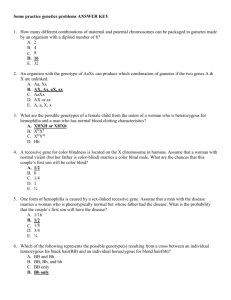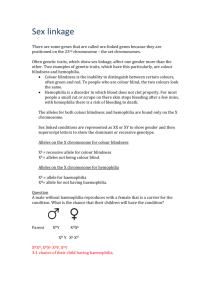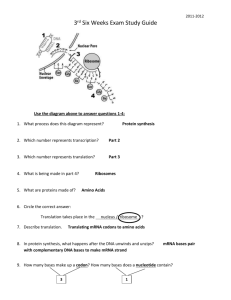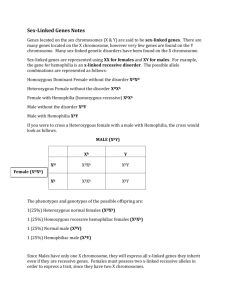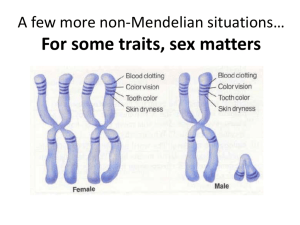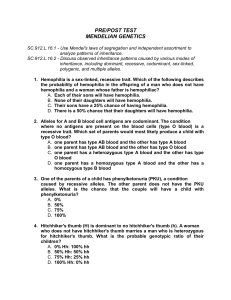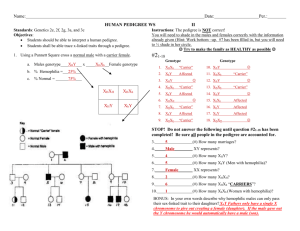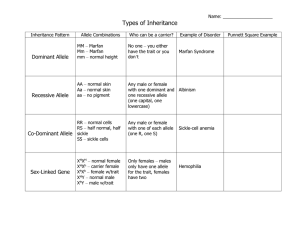Genetics What is genetics?
advertisement
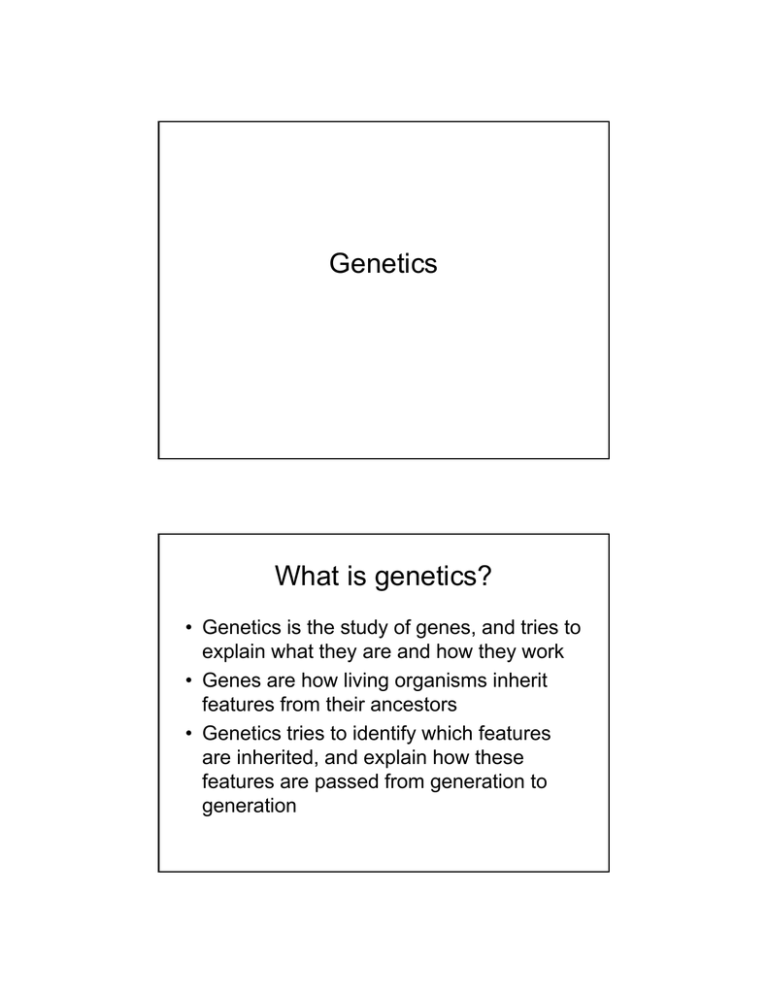
Genetics What is genetics? • Genetics is the study of genes, and tries to explain what they are and how they work • Genes are how living organisms inherit features from their ancestors • Genetics tries to identify which features are inherited, and explain how these features are passed from generation to generation • Genes are made from a long molecule called DNA, which is copied and inherited across generations • DNA is made of simple units that line up in a particular order within this large molecule • The order of these units carries genetic information, similar to how the order of letters on a page carries information • The language used by DNA is called the genetic code, which lets organisms read the information in the genes • This information is the instructions for constructing and operating a living organism. Genotype & Phenotype • The genotype is the genetic constitution of an organism • The phenotype of an organism is, roughly, the characters (or traits) of an organism – It does not mean just 'what you can see on the surface – Example: blood groups are definitely a part of the phenotype but they are not visible just by looking at a person Dominance • An allele is a form of a gene at a particular position on a chromosome • In a heterozygote the effect of one allele may completely ‘mask’ the other • The allele that masks the other is said to be dominant • The alternative allele is said to be recessive • Dominant characteristic – Dimples = D • Recessive characteristic – No dimples = d • These can combine as follows: – DD = dimples – Dd = dimples – dD = dimples – dd = no dimples Gregor Mendel • Mendel demonstrated that the inheritance of certain traits in pea plants follows particular patterns Inheritance • Punnett squares can be used to predict the results of single trait crosses – Shows all of the possible combinations of the genes – Shows the probability of each combination • Crossing between two pea plants for purple (B, dominant) and white (b, recessive) blossoms • Homozygous – Both alleles are the same – BB, bb • Heterozygous – Both alleles are different – Bb, bB Gender in Humans • Gender is determined by one pair of chromosomes • There are two types of sex chromosome – X, Y • Male = XY • Female = XX • Males can contribute either and X or Y chromosome • Females can only contribute an X chromosome • Males, therefore, determine the sex of the offspring Mother Father X Y X XX XY X XX XY Sex-linked Traits • Sex chromosomes carry genes for many other characteristics besides gender • Such characteristics are said to be sexlinked • Most sex-linked traits are recessive and are carried on the X chromosome • Some sex-linked traits – Hemophilia, Red-Green Color Blindness, Congenital Night-Blindness, Muscular Dystrophy Example - Hemophilia • • • • Hemophilia is the inability for blood to clot Recessive gene on the X chromosome XH = normal clotting (Dominant) Xh = Hemophilia (Recessive) • Female genotypes/phenotypes – XHXH = normal – XHXh or XhXH = carrier – XhXh = hemophilia • Male genotypes/phenotypes – XHY = normal – XhY = hemophilia Inheritance Probabilities • Father is normal and Mother has hemophilia Mother Father XH Y Xh XhXH XhY Xh XhXH XhY • Male offspring have hemophilia • Female offspring are carriers • Father is normal and Mother is a carrier Mother Father XH Y X H X HX H X HY Xh XhXH XhY • Female offspring – 50% chance normal (XHXH) – 50% chance carrier (XhXH) • Male offspring – 50% chance normal (XHY) – 50% chance hemophilia (XhY) • Father has hemophilia and mother is normal Mother Father Xh Y X H X HX h X HY X H X HX h X HY • Male offspring are normal • Female offspring are carriers • Father has hemophilia and mother is a carrier Mother Father Y Xh Xh XhXh XhY X H X HX h X HY • Female offspring – 50% chance hemophilia (XhXh) – 50% chance carrier (XHXh) • Male offspring – 50% chance normal (XHY) – 50% chance hemophilia (XhY) • Both parents have hemophilia Mother Father Xh Y Xh XhXh XhY Xh XhXh XhY • All offspring have hemophilia
